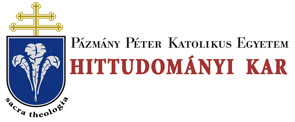Fodor György - Török József - Tusor Péter (szerk.): Felekezetek az Igazság szolgálatában: történelem, teológia, önazonosság (1500-2000) - Studia Theologica Budapestinensia 34. (2009)
I. Catholic-Orthodox symbiosis in Transylvania (Katolikus-ortodox együttélés Erdélyben) - Ioan Chirila: Tolerance and intolerance in t he Transylvanian legislative corpora (the 16th-19th centuries)
bracing by accumulation and reaffirming in a religious-Christian key of the religious pre-Christian fund of our ancestors, an extraordinary similitude with the situation created by the whole attitude and activity of our Savior, Jesus Christ, regarding the cult of the Old Testament. The conclusion is very easy to be seen: where the religious identity is obvious, where the act or the history of salvation is perceived as testimony, and not as proselytism, there can be no restrictions of the religious freedom, applied to others; only where hesitation is present, there is a grain of anxiety which produces such states and attitudes. This period, very long and very poor regarding documents, offers us the possibility of realizing some attitudinal states in their normal amplitude, such as: the bishoprics from Tomis and their participation to the Ecumenical Councils,3 a fact which testifies the dynamics and, in the same time, the sense of the Christian unity, realized by the structures of the genuine Dacian Christianity; the medieval structures of principalities show the fact that the Romanian church life has remained, even after the Great Schism,4 5 6 within the framework of the oriental Christianity, but non-opponent toward the occidental one. The 12,h— 13th centuries attest, on the other side, an orientation and an attitude aggressive enough from the part of the occidental Christianity toward the autochthonous oriental Christianity, at least regarding the language of the official acts and documents, which is an aggressive and an exclusivist one.3 The dynamics and the relation of the Transylvanian Christianity to the Byzantine world are very well reflected during the 14l1’—15'11 centuries by the institution of stauropighia. In this way, we have in mind the monastery of Sas and Bale from Perii Maramuresului.1’ The second millennium in Transylvania is characterized by the institution of the Hungarian rule. Starting with the 16'1' century, we 3 N. CHIFÄR, The History of Christianity, vol. II: The Epoch of the Ecumenical Councils, Ed. Trinitas, Iasi 2000. 4 M. PÄCURARIU, The History of the Romanian Orthodox Church, Ed. Trinitas, Iasi 2006. 5 D. PRODAN, Supplex Libellus Valachorum. From the History of the Formation of the Romanian Nation, Ed. §tiintificä §i Enciclopedicä, Bucharest 1984. 6 M. PÄCURARIU, The History of the Romanian Orthodox Church, Ed. Trinitas, Iasi 2006. 15
